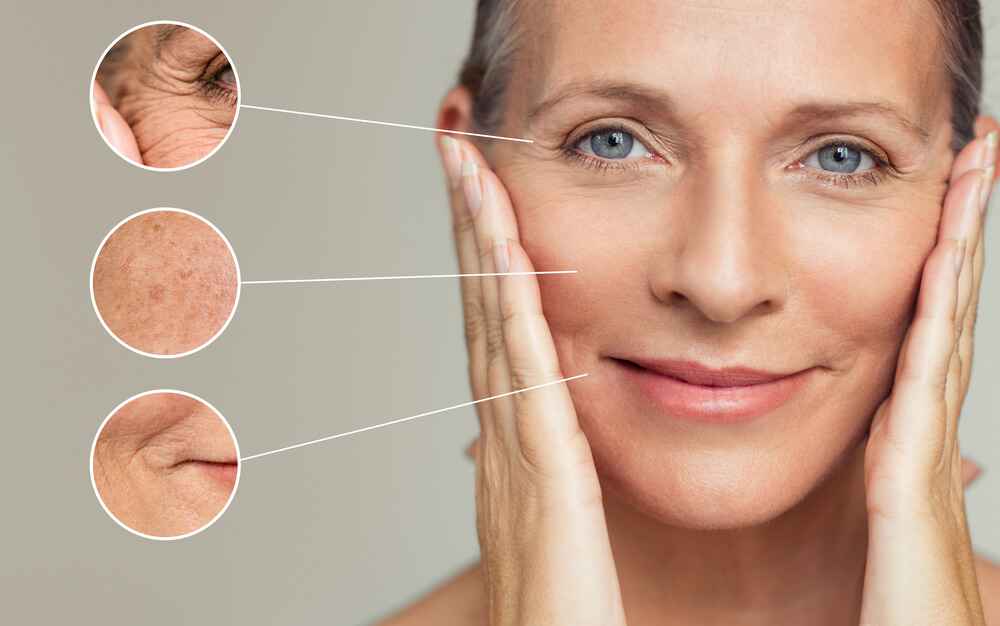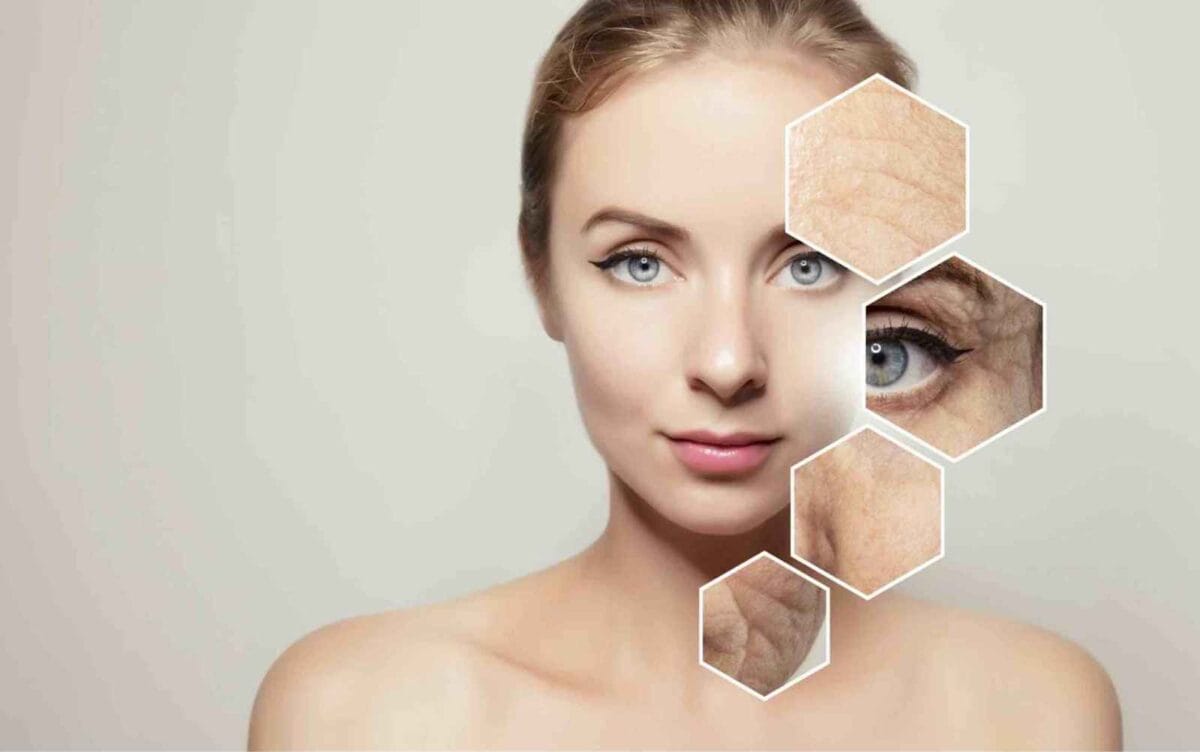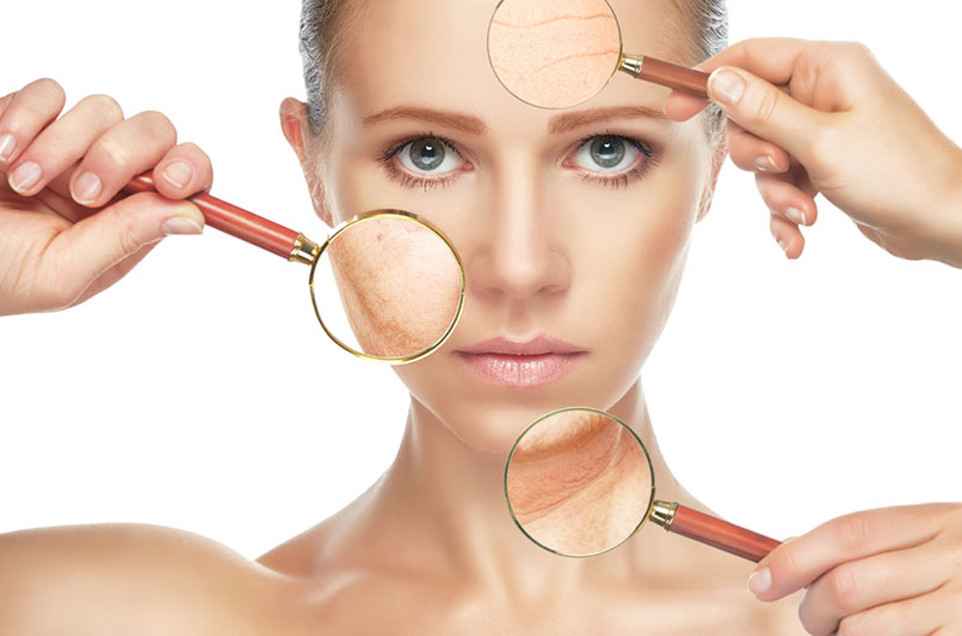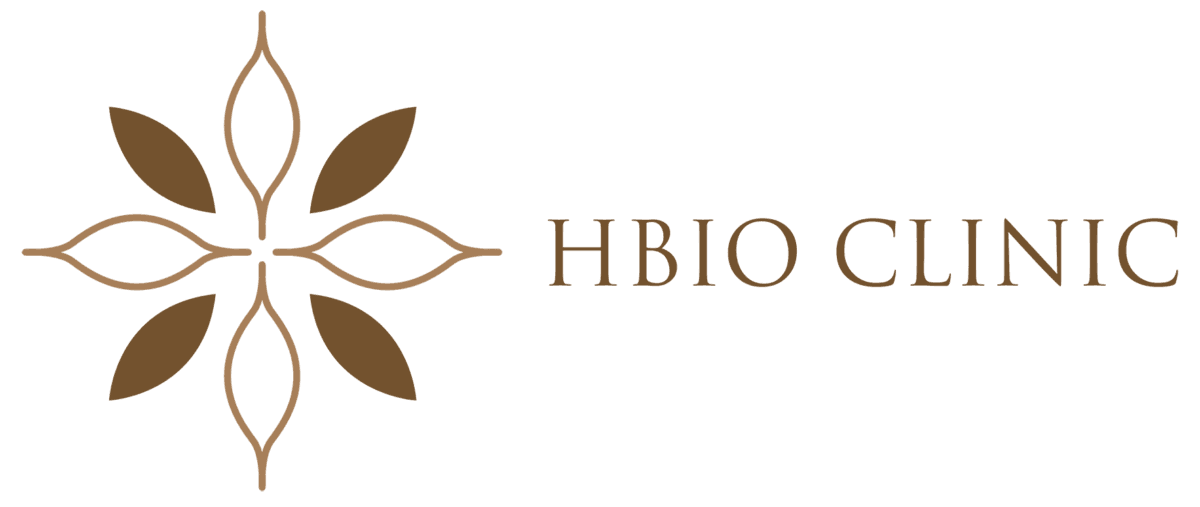What is skin aging and why does it concern so many people once they reach their 30s? Skin aging is a natural biological process that gradually reduces your skin’s elasticity, leading to fine lines, dark spots, and sagging. By understanding what aging skin really is through this guide from HBIO Clinic, you’ll be better prepared to prevent and manage its effects effectively.
What Is Skin Aging?
Skin aging is the gradual loss of the skin’s ability to maintain its structure and function over time. As collagen and elastin levels decrease, the skin becomes less firm, loses elasticity, and becomes more prone to wrinkles, dryness, dark spots, and uneven tone. Additionally, the skin’s natural barrier weakens, making it more sensitive to external aggressors.
There are two main causes behind aging skin:
- Intrinsic aging: This refers to the natural aging process associated with age or hormonal changes during stages like pregnancy, perimenopause, or menopause.
- Extrinsic aging: These are external factors that accelerate the signs of premature skin aging, including sun exposure, pollution, smoke, lack of sleep, chronic stress, and improper skincare routines.

When Does Skin Start Aging?
Right after the age of 25, the skin begins to show a decline in its regenerative functions. The production of collagen and elastin—two essential components that maintain skin’s firmness and natural elasticity—starts to slow down. Over time, this deficit accumulates, and by around age 35, signs of skin aging become more apparent.
That’s why it’s important to start taking proactive steps to prevent aging skin early on to maintain a healthy, youthful complexion.
If you begin to notice symptoms such as dryness, dullness, sagging skin, reduced elasticity, or the appearance of pigmentation, freckles, or increased sensitivity at a young age, these may be signs of premature skin aging that should not be ignored.
What Causes Skin Aging to Accelerate?
While internal factors undeniably play a role in the natural aging process, the majority of what causes aging skin actually stems from external influences and lifestyle habits. Here are some of the most common reasons why the skin’s condition declines over time:
Aging Due to Time
As we age, the skin’s ability to produce collagen and elastin naturally declines. This leads to visible signs of aging such as sagging, dryness, and rough texture. Fine lines and wrinkles begin to form, especially around the forehead, eyes, and mouth — classic signs of skin aging.
Unhealthy Lifestyle and Poor Diet
A diet high in sugar and refined carbohydrates can speed up the degradation of the skin. Sugar, in particular, breaks down collagen and weakens the skin’s firmness. In addition, repetitive facial expressions such as frowning, squinting, or forced smiles can gradually lead to static wrinkles — one of the signs of premature skin aging.
Genetic Factors
Certain rare genetic disorders, such as Progeria (rapid aging in children) or Werner syndrome (premature aging in adults), can cause aging skin to appear very early in life. Individuals with these syndromes may experience deep wrinkles, loose skin, premature graying or hair loss, and other signs of premature skin aging. They also face a higher risk of developing age-related diseases like cardiovascular issues, diabetes, and osteoporosis at an unusually young age.

Sun Exposure and UV Damage
Ultraviolet radiation — especially UVA and UVB — is one of the most harmful external factors that accelerate skin aging. Prolonged exposure without adequate protection can result in sunburn, hyperpigmentation, dark spots, and even cellular changes that may lead to skin cancer. These are some of the most visible signs of premature skin aging and a major reason why aging skin becomes uneven in tone and texture over time.
Blue Light from Electronic Devices
Frequent exposure to blue light emitted by smartphones, laptops, and other screens can also damage the skin. This high-energy visible light disrupts your natural sleep cycle, reduces collagen production, and leads to loss of skin elasticity. Over time, it causes the skin to look dull, tired, and prematurely aged — contributing to subtle but impactful signs of skin aging.
Who Is at Higher Risk of Premature Skin Aging?
What is skin aging and why does it affect some people earlier than others? While skin aging is a natural biological process, certain individuals are more prone to signs of premature skin aging due to their lifestyle, environment, or genetics. Here are groups who face a higher risk:
- Individuals frequently exposed to harsh sunlight without proper UV protection.
- People who regularly use artificial tanning beds or devices emitting ultraviolet light.
- Those with genetic conditions linked to accelerated aging.
- Long-term residents in hot, humid climates where skin is constantly stressed.
- Individuals with a habit of consuming excessive alcohol or stimulants.
- Long-term smokers, whose skin is constantly under oxidative stress.
- People working in polluted environments with daily exposure to dust, chemicals, or toxins.

How to Know If Your Skin Is Aging
Signs of skin aging often become more noticeable as you age. Over time, your skin gradually loses its natural glow and smoothness, making room for dryness, discoloration, and increased sensitivity. So, how to know if your skin is aging? Watch for these common skin aging symptoms:
- Loss of smooth texture—skin becomes rough, dull, and lifeless.
- Persistent dryness, sometimes accompanied by mild itching or tingling sensations.
- Dark spots, freckles, or hyperpigmentation may appear on the forehead, cheeks, neck, or hands—especially in those exposed to the sun often.
- Loose, sagging skin with reduced elasticity, leading to fine lines and deeper wrinkles.
- Thinning of the outer skin layer, making the skin more fragile and prone to damage.
- Weakened capillaries under the skin, resulting in bruising even from minor contact.
- Slower healing—cuts, abrasions, and irritations take longer to recover and are more prone to inflammation.
Safe Ways to Rejuvenate Aging Skin
Nowadays, a variety of cosmetic treatments are used to address skin aging, depending on the specific symptoms and severity. Here are some tailored solutions:
For Dry, Dull Skin with Dark Spots
Deep moisturizing products combined with restorative serums can help bring back the skin’s softness, relieve irritation, and boost overall vitality.
In cases of pigmentation or uneven skin tone, doctors may prescribe topical medications or recommend advanced treatments such as chemical peels or laser therapy. These methods work to even out the complexion and brighten the skin safely and effectively.

For Wrinkled, Sagging Skin with Loss of Firmness
You may consider dermal filler injections, such as Hyaluronic Acid, to smooth out wrinkles and restore skin plumpness at HBIO Clinic. With over 10 years of experience and a team of skilled doctors, HBIO offers top-tier aesthetic solutions using the most advanced technologies on the market. Botox is commonly used to treat forehead lines, crow’s feet, and frown lines between the eyebrows.
In addition, laser treatments can help minimize fine lines and enhance skin elasticity. For more severe signs of aging skin, surgical facelift procedures may be recommended to lift and redefine sagging areas.
Clearly, understanding what is skin aging is the first step toward proper skincare. Preventing and slowing down this natural process should start early—with a healthy lifestyle, consistent skincare routine, and safe, suitable aesthetic treatments tailored to your skin’s needs.


 Tiếng Việt
Tiếng Việt
Dr. Thai Nguyen – Founder and Medical Director of HBIO Clinic. As an expert in aesthetic dermatology, she regularly shares in-depth knowledge and practical experience to provide valuable and insightful information for those seeking better skin health.